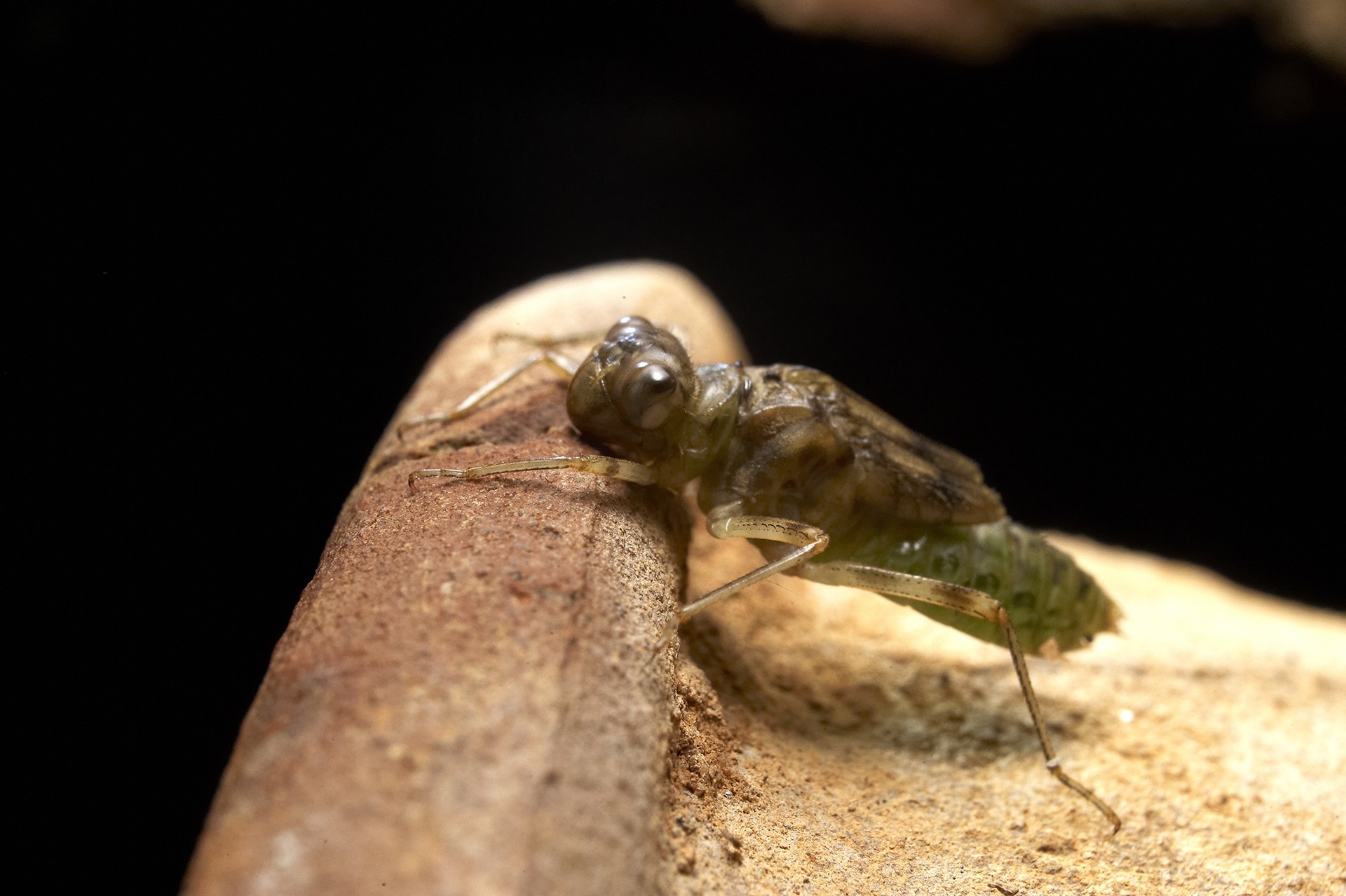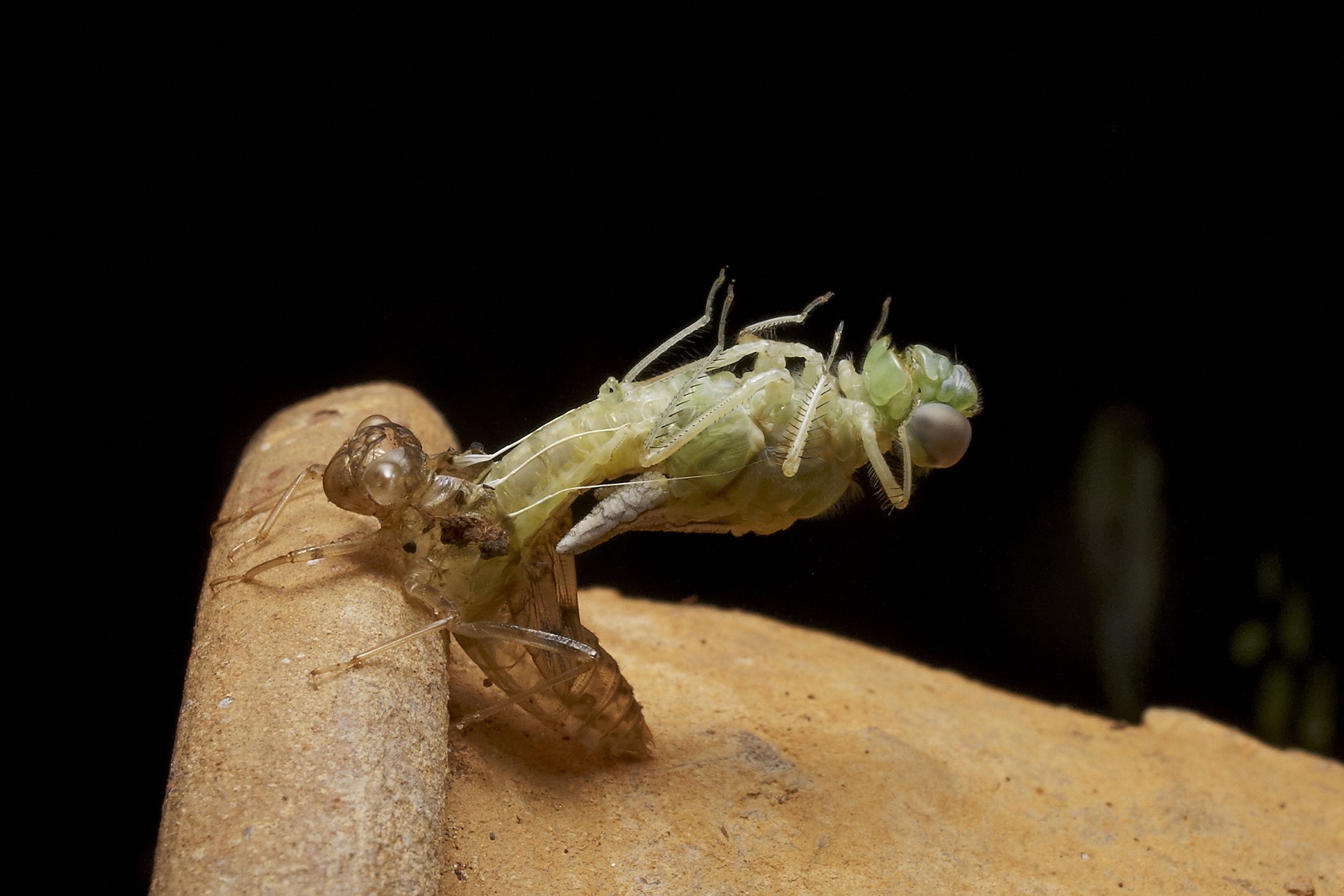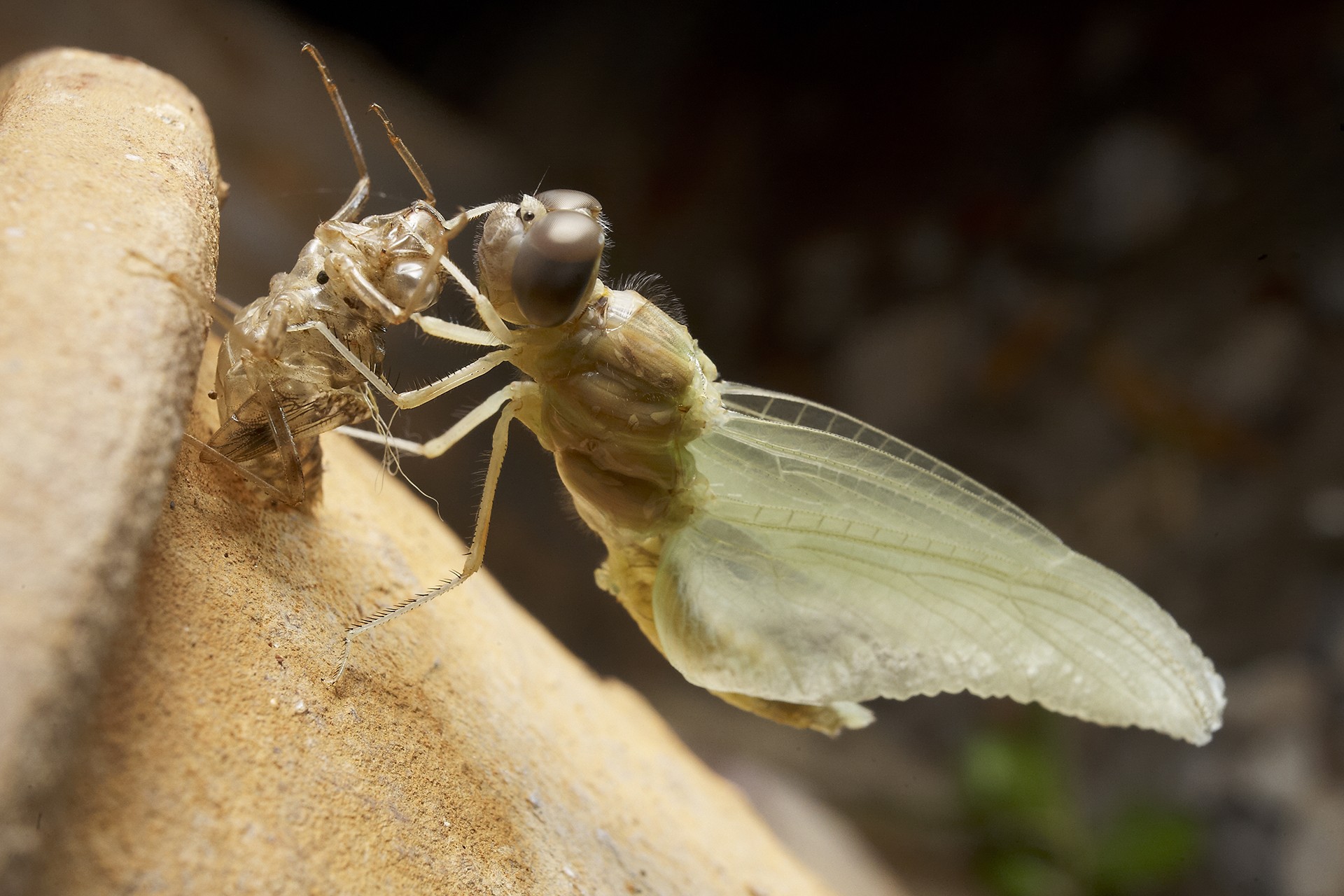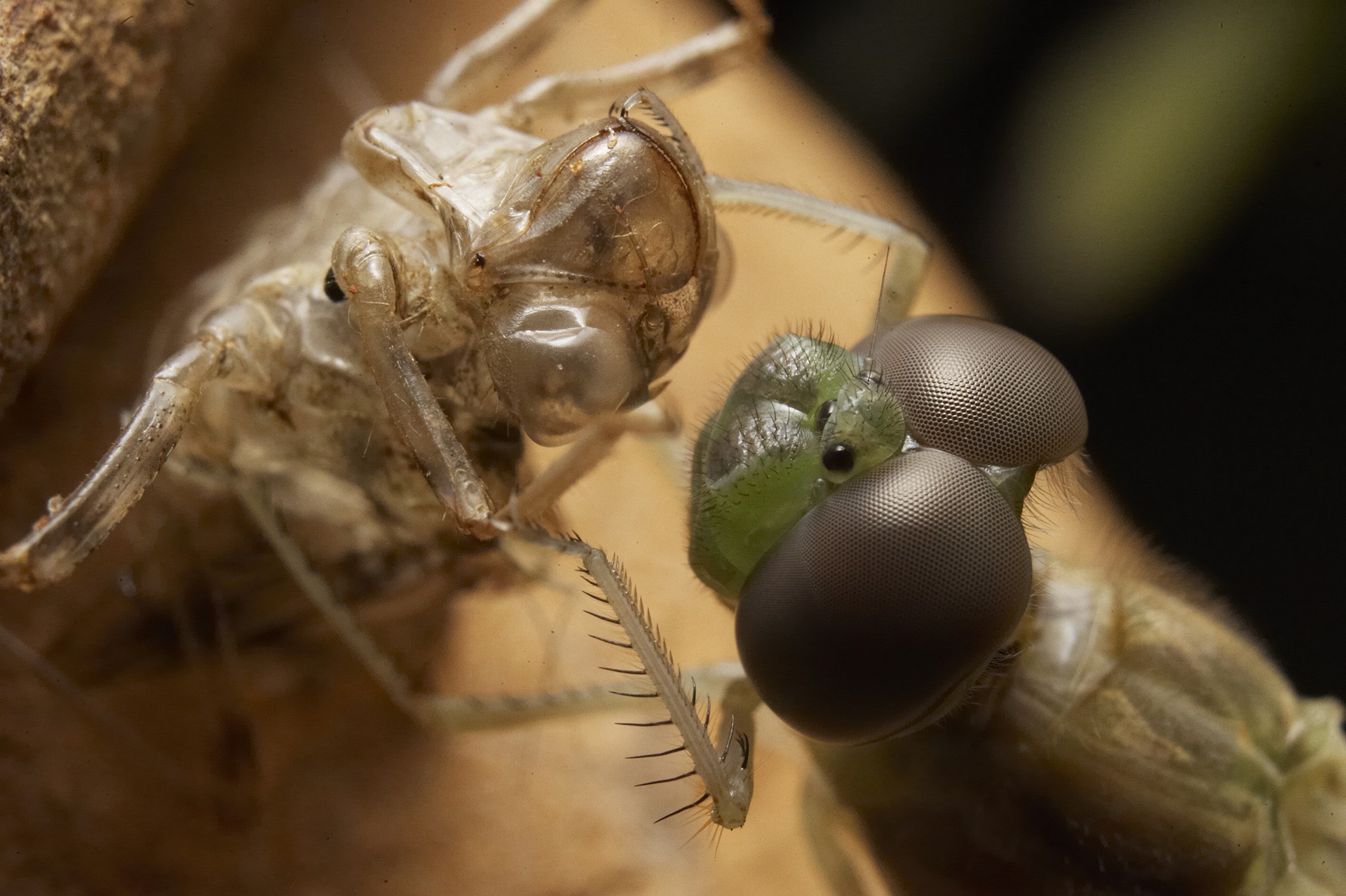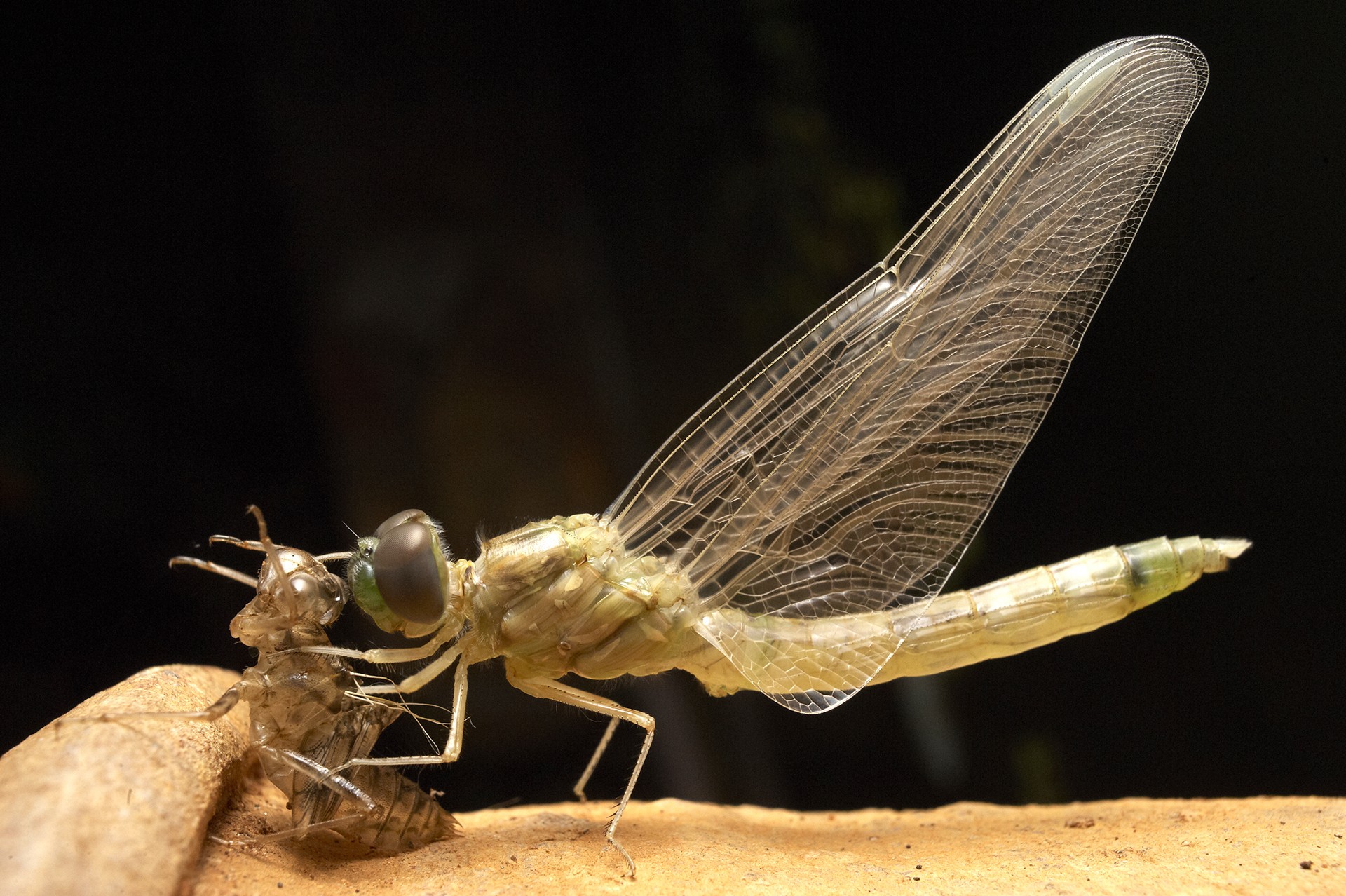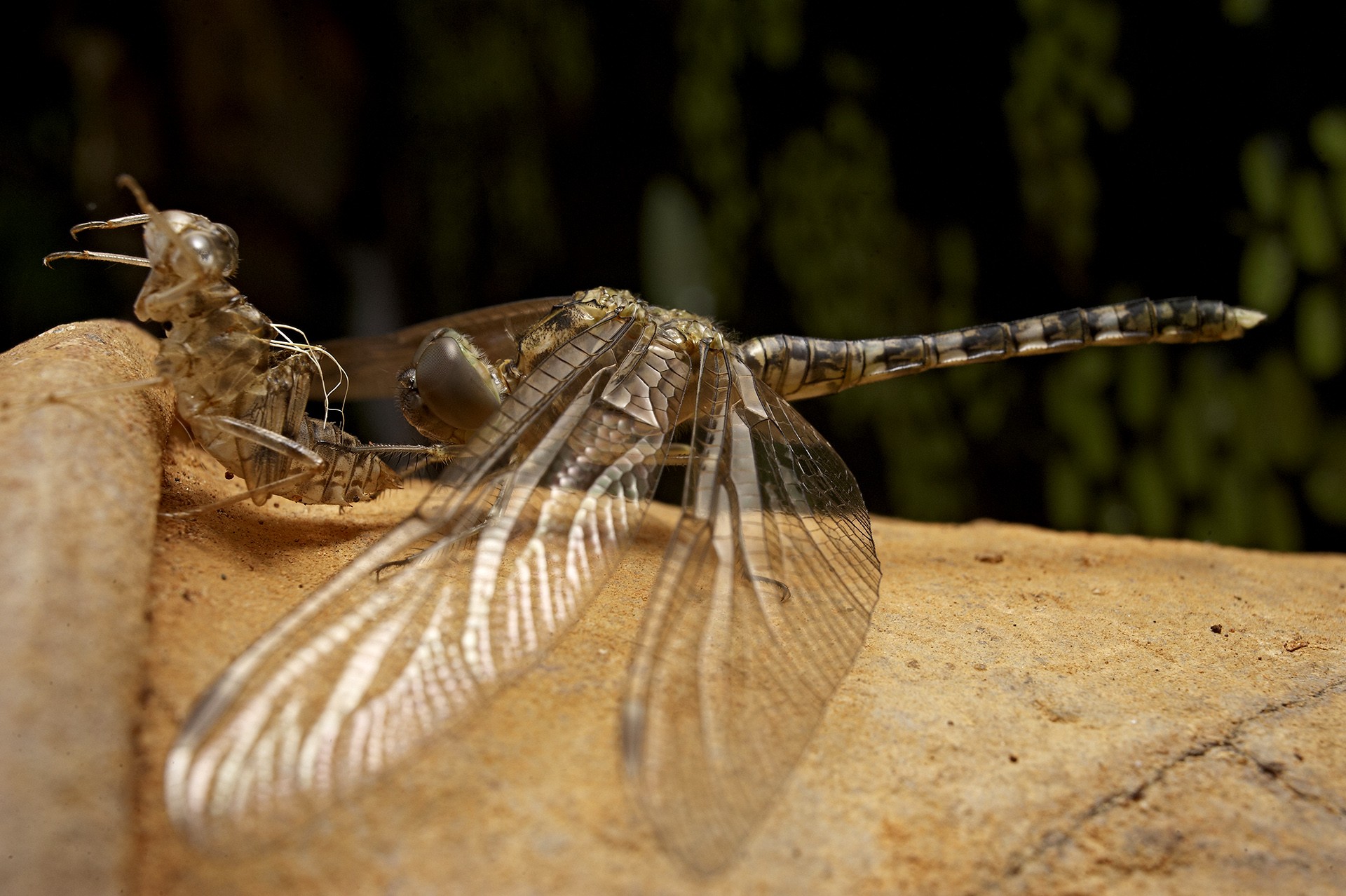When life made its transition from water to land, so did the ancestors of modern-day dragonflies. One of the first winged creatures on earth, dragonflies pre-dated dinosaurs by a 100 million years. In fact, they were some of the largest insects ever to fly.
Part of nature’s pest control, they're carnivores in their own right and are usually found near fresh water sources (they use streams/ lakes/ ponds as breeding grounds). While searching for dragonflies in tall grass near streams, I've found that they're attracted by the mosquitoes that gather over my head. Catching insects on the fly, they occasionally display behaviour much like a bee-eater or other birds that sally (leave and return to the same perch immediately). Using a sort of air-propulsion through their anus, they are able to surge forward to catch their prey. It helps that they have excellent eyesight.
The nymphs feed on mosquito larvae, though they are also known to prey on small fish and tadpoles. Most of the dragonflies’ lives are spent as nymphs; they moult about four or five times while increasing in size before emerging in their adult form. Dragonflies do not undergo a pupal stage during metamorphosis. Unlike caterpillars that cocoon themselves and experience structural changes over a few days or weeks, the nymph’s final stage already has a fully functional adult version on the inside, ready to emerge. Hence, the word hemi-metamorphosis or half-metamorphosis is used to describe this change.
Here, the process of metamorphosis is documented through photographs.
